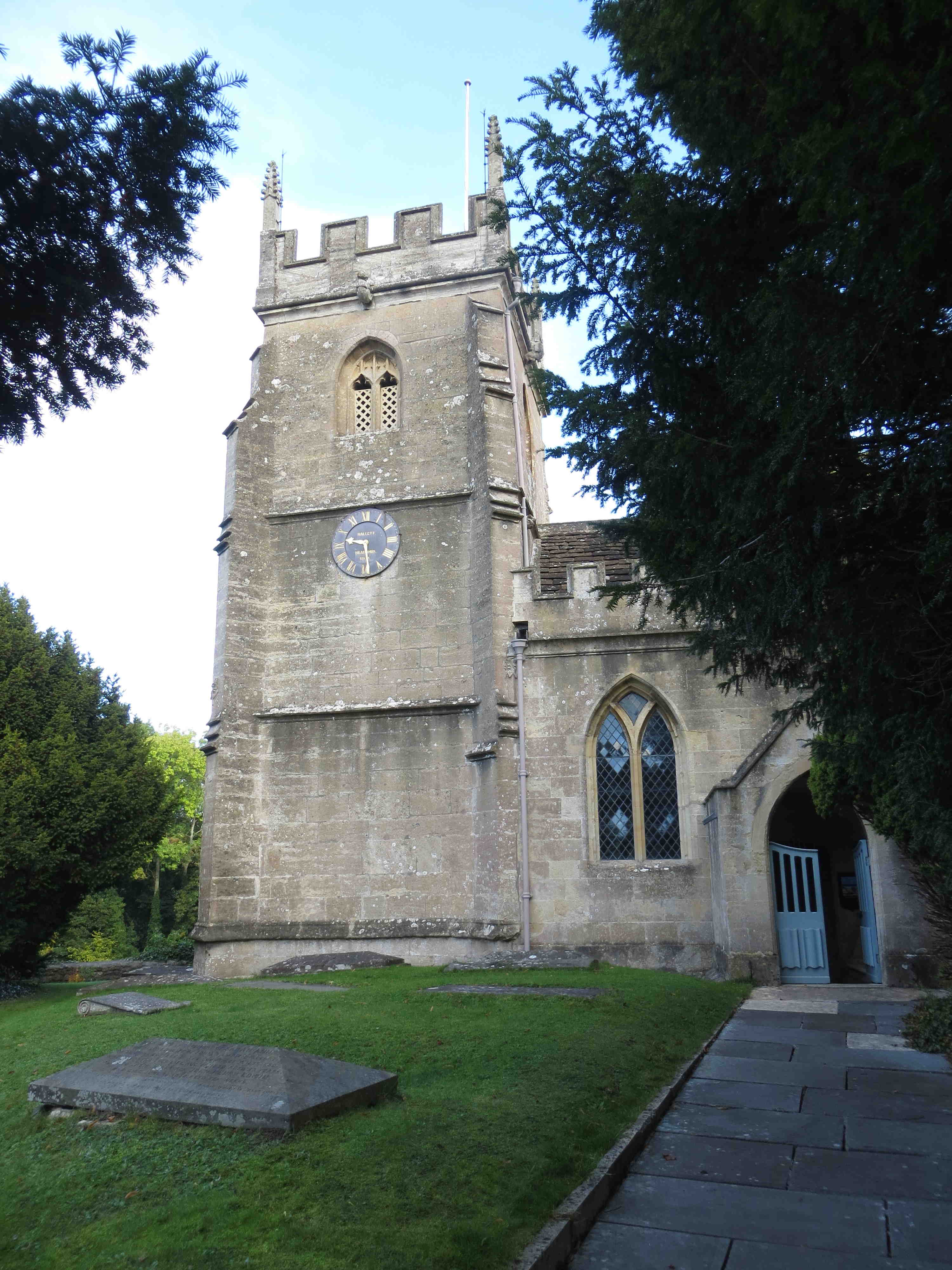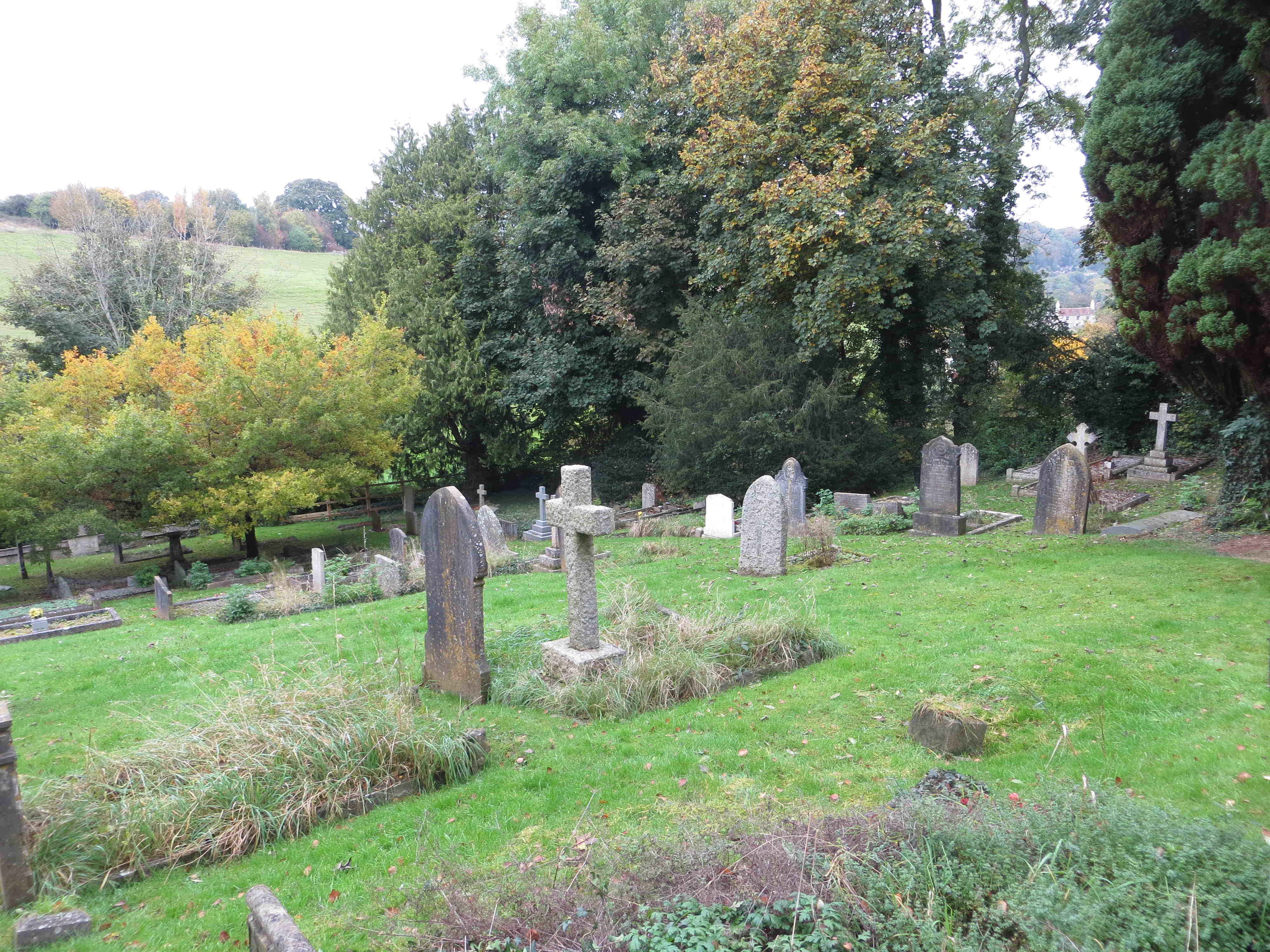
St Peter's Church, Freshford
The church of St Peter has parts of its structure which are reputed to date from the 15th century but the village itself is thought to have Saxon origins. It is part of joint benefice within the Deanery of Bath which includes Limpley Stoke and Hinton Charterhouse. For a history of the church see Freshford – The History of a Somerset Village by Alan Dodge (2014) pp 86, 182-184.
The Bath Chronicle of early 1862 had a series of articles about a scandal arising from desecration of the church. Four men: a builder, the sexton and two labourers were charged with stealing a hundredweight (50kg) of lead, brass coffin handles etc. The edition of 23 Jan 1862 p8 related the history of the affair. It also reported on a conducted tour of the churchyard by ‘an old inhabitant’ and had “Our informant accounted for the smallness of the number of gravestones in the parish by the fact, that a former rector, between whom and his parishioners generally there was a sad feud, cleared away most of the stones, and placed then in a hovel under the yard. We are told that whenever a grave is dug, bones of persons long-since buried are always turned up, and that a former sexton calculated that a coffin perished in ten years, so that its place could then be supplied with another.”
As indicated by the press article the graveyard has relatively few memorials (about 40). In recent times there has been burial of ashes and there are about three dozen cremation plaques along the wall west of the church.

Freshford Cemetery
In addition to the graveyard at St Peter’s church, there is also a separate cemetery which is administered by Freshford Parish Council.
From the Bath Chronicle of Thu 12-Dec-1872 p2:
FRESHFORD- Consecration of Cemetery.- Those of our readers who are acquainted with the beautiful village of Freshford may probably be aware that it was recently determined to supplement the churchyard with a cemetery. This course having been determined upon the usual steps were taken, a suitable piece of ground secured, and the arrangements were so advanced that it was determined to ask the Lord Bishop of Bath and Wells to consecrate it on Tuesday. The usual course of having divine service in the Church was adopted, and the parishioners assembled there for the purpose at 12.45, when it was found that his Lordship had not arrived as was expected by the 12.16 train. The large congregation waited for some time in the church, and then broke up into groups about the churchyard, hoping that his Lordship would arrive by the 2.22 train, but they were again doomed to disappointment. It was then decided to telegraph inquiries, in answer to which it was heard that he had left with the purpose of coming to Freshford, as previously arranged. By some means, however, it was rumoured that his Lordship had been seen at Devizes, and returned to see what the 3.26 train would bring forth, and this time they were rewarded by the presence of our good Bishop. The church bells at once struck out a glad peal of welcome, and the people flocked to take their place in the sacred edifice only to leave them directly they were settled, it being decided in consequence of the present shortness of the days to consecrate the cemetery before holding divine service. A procession of clergy, churchwardens, and parishioners, was formed, and the consecration service took place in the usual manner. . . .
The cemetery is an roughly rectangular plot (60m x 45m) between the The Tyning and Freshford Lane about 200m west of High Street. The land slopes down from the south to the north. There are two gates on the southern side and a gate in Freshford Lane. The area is divided into consecrated and unconsecrated sections with, along the southern fence, a line of cremation plaques. Outside the southeastern gate is the village's war memorial.
The grave identifiers in the index use the following convention:
- those in the churchyard start with 'O' followed by a number, with numbers from 100 for cremation plaques.
- those in the cemetery start with 'N' and then 'U' for unconsecrated, 'C' for consecrated, 'X' for cremation plaques, followed by a number.